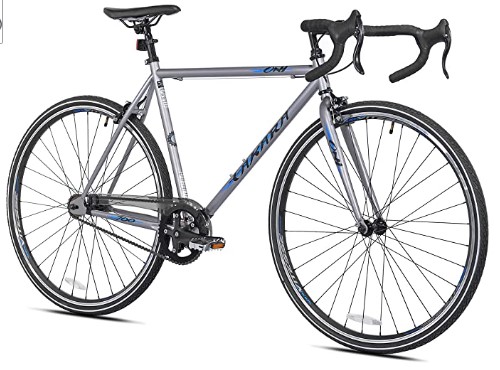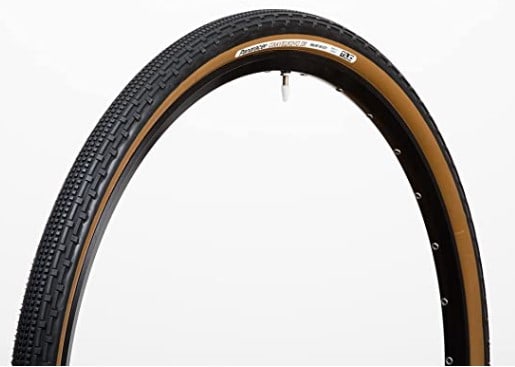Do you find yourself riding on city roads in one minute and on dirt roads in the other? Well, these two surfaces feel quite different on a bike. In fact, there are numerous cyclists’ forums where people try to compare 28mm vs 32mm tires. So, which one is better for commuting and why?
The 28mm tires are good for commuters on smooth city roads. They have better acceleration and attain higher speeds. As for the 32mm, they are better for rugged terrains. Also, with 32mm tires, you experience less joint stress since they act as shock absorbers.
Notably, both tires have their advantages and disadvantages for commuters so, let’s take a better look at 700 × 32c and 700 × 28c tires.

Comparison Between 28mm Vs 32mm Tires (Characteristics)
Notably, these two bike tires are the most common. But they have slightly different characteristics that make them unique.
Difference In Weight
The 28mm tires have one major advantage over the 32mm; they are light in weight. Actually, the 28mm tires are lighter, narrower, and support air at higher pressure.
On the other hand, the 32mm are wider and heavier, making them have inferior aerodynamics.
The table below shows a comparison of the weight of 28mm vs. 32mm tires.
| Tire Model | Weight (28mm) | Weight (32mm) | % Difference |
| Donnelly LGG | 290g | 382g | 31.7% |
| Teravail Rampart | 380g | 455g | 19.7% |
| Vittoria Zaffiro | 440g | 480 | 9% |
| Schwalbe Lugano II Active | 310g | 400g | 29% |
| Continental Contact Urban | 400 | 445 | 11.25% |
| Panaracer Pasela ProTite | 280g | 350g | 25% |
| Continental Grand Prix 4-Season | 280g | 320 | 14.2% |
| Average = 19.98% |
From the data in the table above, it is clear that 28mm tires are, on average, 20% lighter than 32mm tires of the same model.
Acceleration Speed
The lightweight characteristic makes the skinny 28mm tires better in acceleration. Again, since they have a lower rotational mass than the 32mm tires, the 28mm tend to be faster on smooth city roads.
Actually, those are two reasons why you will find professional cyclists use rather skinny tires where 25mm is the present-day standard.
On the other hand, if you happen to switch from a 28mm to 32mm tire, you will most probably feel your bike get sluggish.
All the same, if you use your bike for commuting and not racing, the slight acceleration boost you get by shifting from a 32mm to a 28mm tire is negligible.
So, for a good 32mm tire, you may consider going for the Continental Grand Prix 4 Season Road Bike Tire, which features Vectran puncture protection. The tire is as hard as steel yet extremely lightweight.

Rolling Resistance On The Road
Technically, rolling resistance is the force that opposes a bicycle’s motion due to tire deformation. In other words, it is the force a cyclist has to overcome to keep the bike at a constant speed.
Technically, the leading cause for high resistance is the constant tire deformation at the contact patch as the wheel rolls. Larger tires tend to remain rounder under pressure, unlike narrower wheels that deform more over a great length.
Consequently, wider wheels have less rolling resistance as compared to narrower ones.
Therefore, if inflated to the same pressure, a 32mm tire will have less rolling resistance than a 28mm tire.
Nevertheless, this difference only happens when the two tires are inflated to the same pressure.
However, when you inflate narrower tires to higher pressure values, you reduce tire deformation at the point of contact with the ground.
As a result, the narrower tire experiences less rolling resistance, but your ride becomes a bit uncomfortable on rugged roads.
When comparing 28mm vs 32mm tires, the same principle mentioned above applies. With higher pressure, you can keep the rolling resistance for the 28mm low.
The table below helps to compare pressure ranges for some 28mm and 32mm tires.
| Tire Model | 28mm | 32mm | % Difference |
| Donnelly Tire Strada LGG | 85-105 PSI | 40-80 PSI | 23.8% |
| Panaracer Pasela ProTite | max. 115 PSI | max. 95 PSI | 17% |
| Continental Contact Urban | 80-110 PSI | 65-94 PSI | 14.5% |
| Continental UltraSport 3 | 80-116 PSI | 65-102 PSI | 12% |
| Cont. Grand Prix 4-Season | 95-115 PSI | 85-102 PSI | 11% |
| Average – 15.66% |
Note: The differences are gotten from the max values.
The table above shows that 28mm tires operate on approximately 16% higher air pressure than 32mm tires.
For an excellent 28mm for your road bike, you may go for the Vittoria Zaffiro V Wire Bead Tire, which is light in weight (410g) and durable on the road.
Which Ones Are More Comfortable: 28mm Vs 32mm Tires?
Basically, narrow tires can’t hold as large volumes of air as wider tires can. Therefore, slim tires have more significant deformation at low pressure and are susceptible to pinch flats.
Therefore, cyclists have to inflate slim tires such as the 28mm tire with higher air pressure to avoid flats.
As a result of the firm tire, the bike intensely transmits vibrations from uneven roads to the rider.
On the other hand, 32mm tires that are wider require large air volumes at lower pressure.
As a result, the wider tire acts as a road vibration buffer. Technically, instead of the tire bouncing off the rough road, it squishes.
You may look at Gravel King SK Folding Tire, which is tread aggressive, weighs only 320 grams, and works at a 30-90 PSI pressure range.
Therefore, while the 28mm tire is excellent on smooth city roads, it has an awful off-road performance. On the other hand, the 32mm will perform better on rugged terrains.
In that case, if you usually find yourself riding on dirt roads, a 32mm tire like the will be an excellent choice.

Are 32mm Tires Faster Than 28mm?
When inflated to the same air pressure, 32mm tires experience less rolling resistance. Actually, we found wider tires have minimal deformation when subjected to pressure.
So, if the two tire sizes were to operate at the same air pressure, the 32mm would be faster.
On the other hand, when the 28 mm tire is inflated to its max recommended pressure, it experiences low rolling resistance too. This makes the thin tires as energy-efficient as the wider ones.
In addition, we found out that the slimmer 28mm tires have better aerodynamics than the 32mm. As a result, the 28mm tires offer better acceleration on roads.
So, are 32mm tires faster than 28mm? Yes, the 32mm tires are faster than the 28mm when working at the same pressure or an irregular surface.
Can I put 32mm tires On A Road Bike?
A change is always good, especially when changing your bike tires for the better. So, when it comes to changing your bike tire to 32mm, it depends on several factors.
First, it will depend on your current tires’ width. Also, it would help if you considered whether your rim and bike’s frame would accept wider tires.
The width of the rim will determine the width of the tire you can put. Fitting wider tires on road bikes is a common practice.
Actually, replacing a 28mm tire with a 32mm can result in a significant change in the quality of your ride.

Although it is possible to fit wider tires, you need to make sure that there is clearance in the forks and frame to accommodate the wide tires.
Consequently, every bike has specifications by the manufacturer on the biggest width the frame and the forks can take.
So, can you put 32mm tires on a road bike? Yes, you can. If you want a smoother ride than what 28mm tires offer you, go for 32mm.
Actually, you may look at the Continental Cyclo X-King Fold Race Sport Bike Tire, which has 26% less rolling resistance. The tire also has a better grip and is long-lasting. In addition, it is puncture-resistant.
Also read:
In Summary
Both 28mm and 32mm tires have their advantages and disadvantages. For example, the 2mm tires can achieve higher speeds and accelerations on smooth roads.
Unfortunately, this comes at an expense. Consequently, you have to endure rough rides when you go off-road.
On the other hand, 32mm tires are better for off-road rides as they offer more comfortable trips.
Therefore, for commuters and other casual cyclists, 32mm tires are the best choice. Basically, these tires will offer you better control of the bike and diminish road vibrations.
All the same, for people who prefer some speed over the little comfort, or ride on smooth asphalt, 28mm tires are ideal.